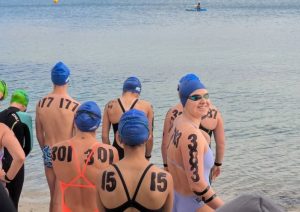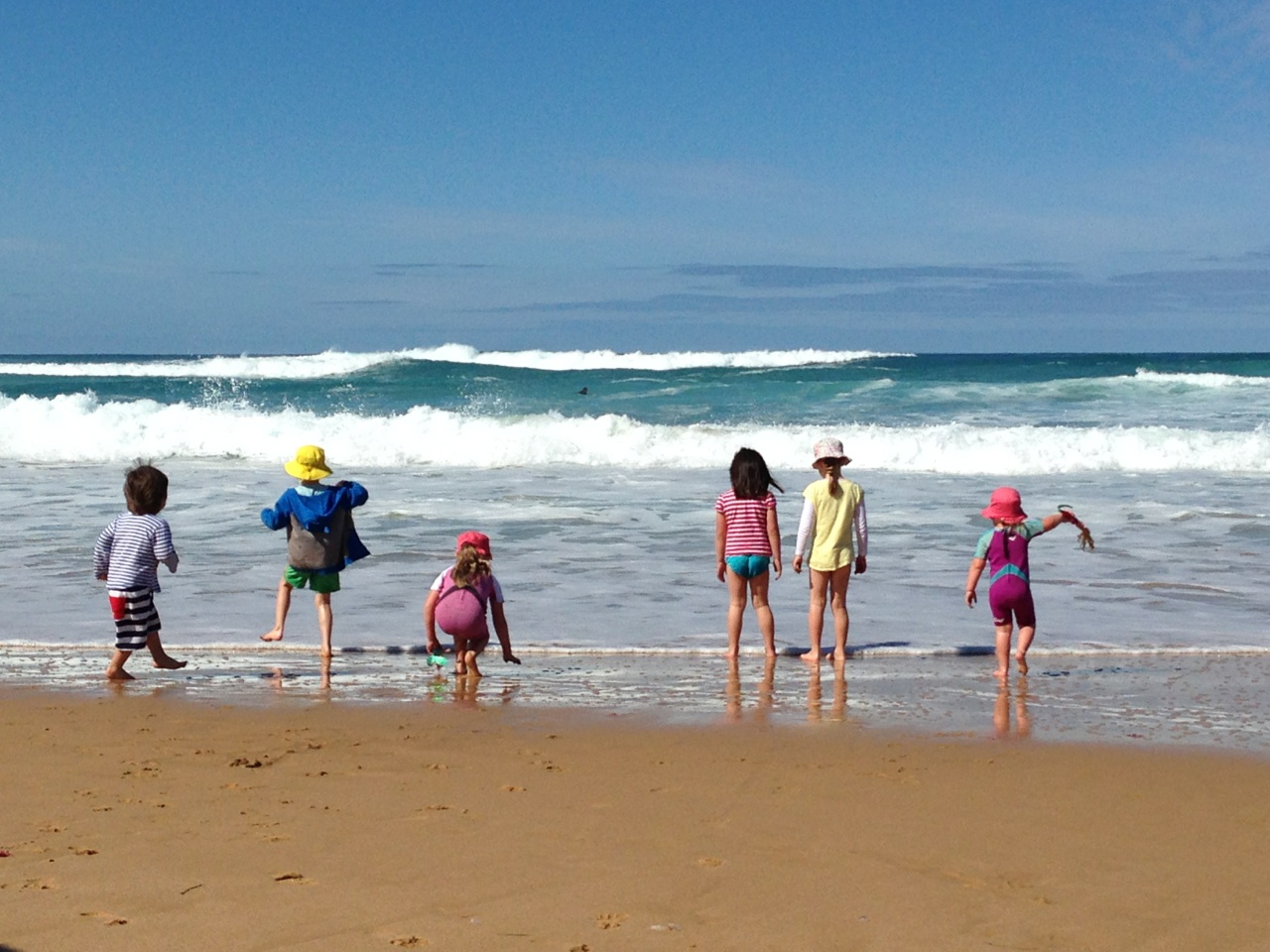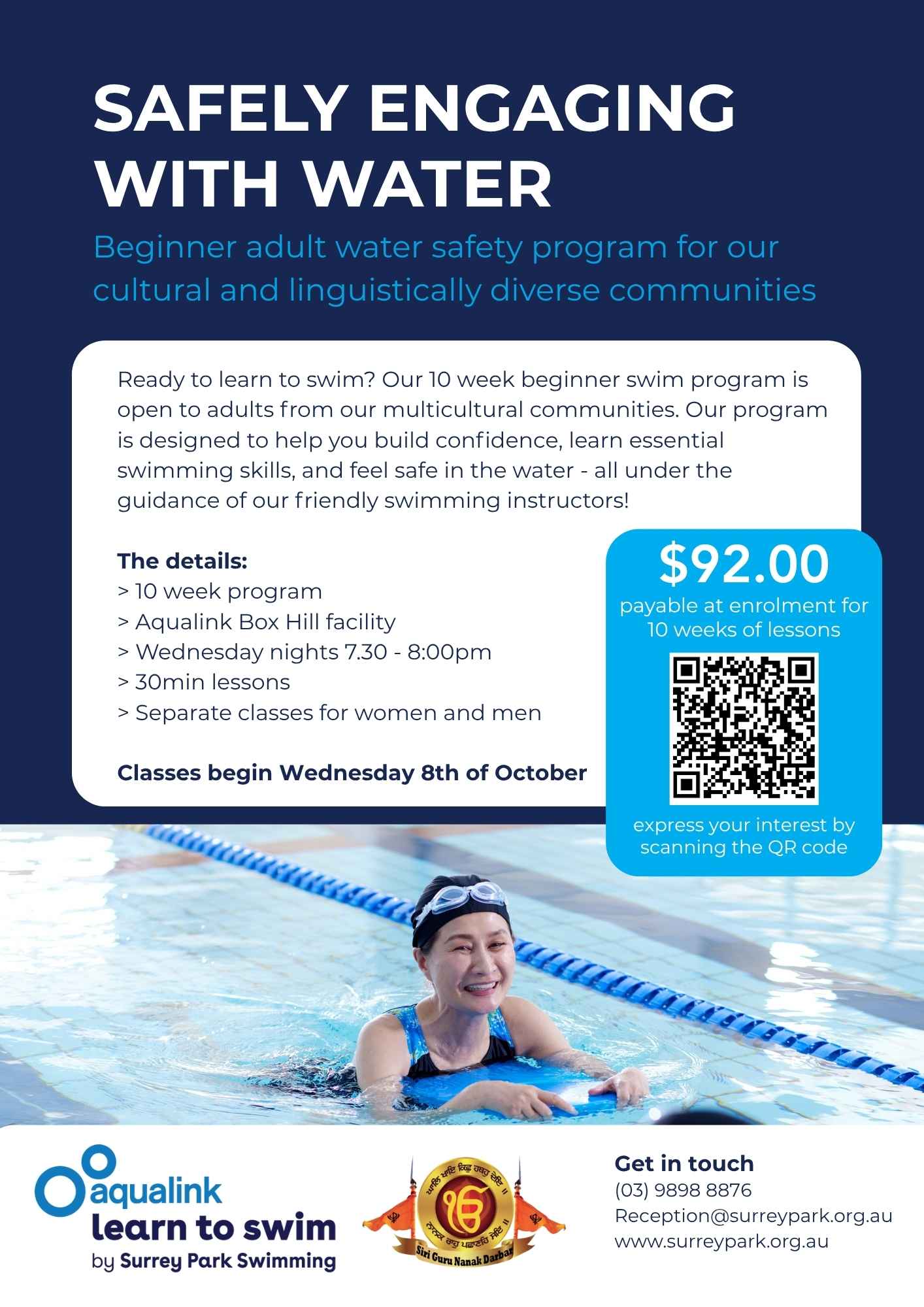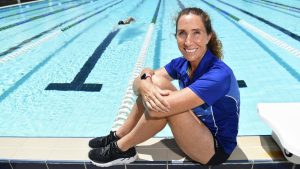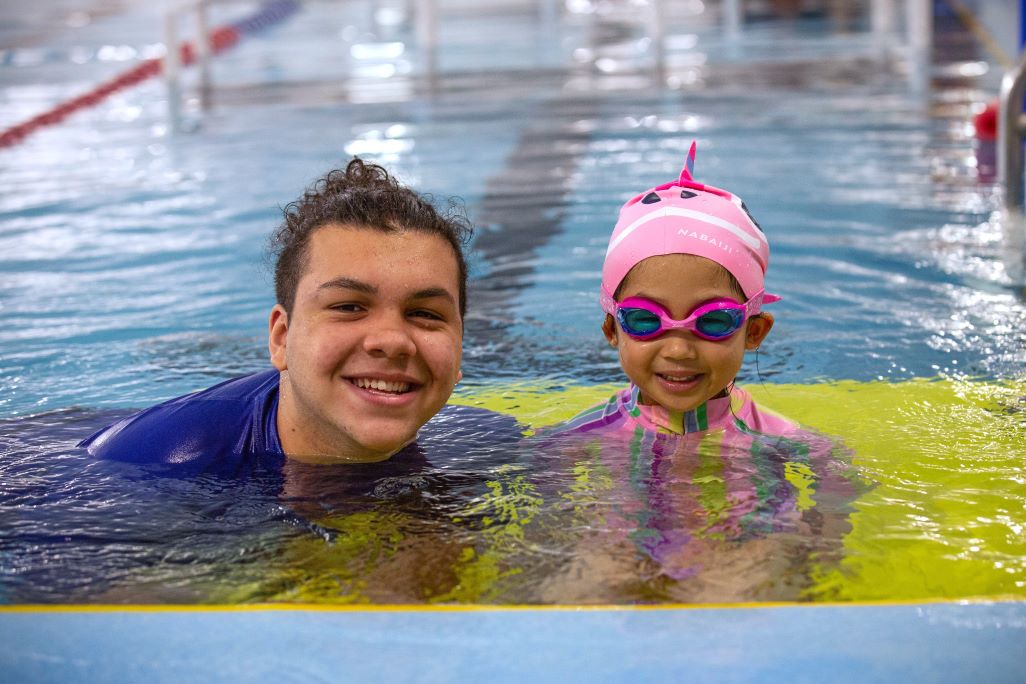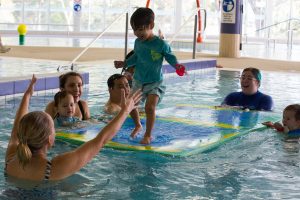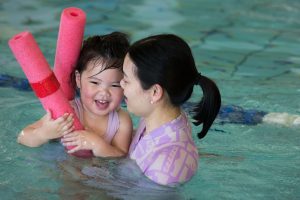Surrey Park Swimming has a strong Open Water swimming contingent that travels around Australia every summer competing in open water events. Our open water squad received outstanding results at the 2025 Australian Open Water Championships with many medals achieved over the season. This blog is intended for beginner open water swimmers of all ages to gain an understanding on how to prepare and what to expect at your first open water swim.
YOUR FIRST OPEN WATER RACE
Welcome to the big blue. Open water swimming. No lane ropes, no black lines to follow, no tumble turns, no dive starts. It is racing in natural bodies of water, a unique experience very much unlike the swimming pool.
Open water racing is an Olympic event rapidly increasing in popularity, the marathon of swimming, and it’s all about ‘first-over-the-line’ whilst contending with weather, wind, waves, currents and a throng of jostling swimmers.
So, you have decided to take the plunge and compete in an open water event. The following information and advice is provided to help ensure an enjoyable experience. And welcome to the big blue.
CHOOSING AND REGISTERING FOR A FIRST RACE
For younger swimmers, 1 – 2.5 km events are more likely to result in a positive experience, rather than launching straight into a longer event: 5km (or more) is a long way if all of a sudden you discover you are not comfortable with being jostled or not seeing the bottom.
While ocean swims are interesting and exciting, bay swims are less challenging for beginners whilst still providing an opportunity to develop skills for all open water swimming. The ocean in Victoria is also significantly colder than racing in Port Phillip or Western Port Bay.
Like pool racing, open water registration is online. For smaller events, this is can be up until a day or two before the event, giving swimmers the opportunity to assess weather conditions before making a final commitment.
A couple of fundamental points to consider:
(1) Open water swimming does not have the crystal clear, controlled water of a swimming pool. Swimmers are likely not to be able to see the bottom and potentially may only be able to see a few feet ahead of them.
(2) Salt water environments make a swimmer’s body more buoyant which can affect technique, sometimes positively, sometimes negatively.
OPEN WATER RACING WETSUITS – ARE THEY NEEDED?
In Victoria, water temperature is a consideration for safe open water racing. Generally, it is not considered necessary to race in a wetsuit in Victoria for races in Port Phillip Bay or Western Port Bay between late December and March. The bays before December and ocean swims are colder and it is best to discuss with event organisers whether a wetsuit is recommended.
It is worth noting that racing in a wetsuit can enhance performance by between 6 and 11% for strong swimmers (research by Maria Francesca Piacentini, PhD, Scientific Triathlon, 29 May 2024). This equates to an approximate improvement of 30 seconds – 1 minute per kilometre, or for pool based swimmers, it is like reducing a 1:40 sec / 100m to 1:29-1:34 / 100m.
Entry level suits cost about $250 and provide a number of the benefits of the more expensive suits. Look in triathlon shops.
THE LEAD UP AND PRACTICE
While being a squad swimmer familiar with racing in pools will help with open water racing, there are some skills specific to open water. Even a little practice in the lead up to a first race will help significantly.
First and foremost, if there is the opportunity, have a practice swim at a beach. Open water swimming is an unfamiliar environment and even with one or two swims a swimmer can quickly become more comfortable with the fundamental differences to pool racing: lesser visibility and extra buoyancy. When practicing in an open water environment, it is best to wear brightly coloured swim caps, not swim alone, and if available, use a ’tow floats’ to help increase visibility to other water users.
Sighting – looking ahead to see the direction you are meant to be swimming (there are no black lines or lane ropes) – is a crucial part of open water swimming and this can be practiced easily in a swimming pool. “Act like a crocodile,” says professional middle distance triathlete Fenella Langridge. On your breathing stroke, make a quick lift of your head forward just enough to get your eyes above the water line but with your nose and mouth still under the water. Then turn to the side to complete your breath like normal with your recovering arm. This keeps the head the stillest, maintains body position, and helps you stay on course. This can be done as part of a rhythm, for example, every 10th stroke or every 5th breath. Whatever works for the individual swimmer.
Another skill useful in open racing is being comfortable with bilateral breathing. This can help reduce fatigue over long distances, helps awareness of other nearby competitors, and can be useful in certain weather conditions including glaring sun and choppy water.
RACE DAY
Race day is fast approaching. What should you bring, what is going to happen when you get there, and a couple of other points…
In the days immediately before race day, confirm online what time and where registration is. Unlike pool racing, all swimmers need to register with the event organisers at registration time on the day of the event. Whilst checking registration details online, it is also recommended to familiarise yourself with the course outline.
What to bring: water, sunscreen (zinc is good for faces), hat, preferably two sets of goggles (one darker for very sunny conditions, one clearer for overcast conditions, and noting the best goggles for open water racing have greater peripheral vision / bigger eyepieces). Ear plugs and nose plugs can be helpful, particularly if swimmers have sensitive ears. Extra tape (PVC) can be useful to make timing pieces fit more comfortably.
What not to bring: you cannot swim with watches or any device that might be used for timing or pacing. Finger nails need to be short and at many events these will be checked at registration.
It is advisable to eat well and hydrate consistently before the race. Swimmers are in the water expending energy for much longer than in pool based racing.
On arrival at the event, the swimmer first needs to register. Swimmers check their name off a list and receive a competition pack which will include a swim cap coloured according to event, a timing band to put on your ankle, and often some promotional material (for example, t-shirt and brochures). At a number of events your entry number will also be written on your hand, arm or shoulder in waterproof texta.
There will often be a ‘race briefing’ discussing details of the course. This may be for all swimmers combined in one briefing (at smaller events), or each race may have an individual briefing at the beginning of marshalling.
Just as for pool swimming, pre race warm up is important but co-ordinate this so that it does not clash with registration times and racing briefing times.
If wearing a wetsuit, splashing water inside prior to racing will help suck the wetsuit onto your body for racing.
THE RACE
Starting: there will be a lot of jostling for positions giving the best line to the first buoy. It can be hectic and overwhelming. The most important point to consider is that many of those jostling to get the best starting position will then sprint their start, overly tiring themselves early in the race. It is better to build your own race, understanding that all except the best of the ‘jostlers’ will fade over longer distances. There is plenty of time to pick up pace over the course.
If starting in shallow water, knee deep or less, run lifting feet out of water. Between knee and waist depth, ‘porpoise dive’ like a dolphin. Dive forward then whilst still underwater bring your feet up under you, put them down on the sand, and then use them to spring up and forward into another dive. Above waist depth, start swimming.
Once swimming, there can be quite a pack of swimmers. Being in the pack may give you the shortest line to a buoy. Swimming on the edge of the pack, however, means less competition with other swimmers, less jostling and gives you a far better opportunity to settle into your own stroke and rhythm sooner. This can compensate for any greater distance swum and, as the race progresses, packs will thin and you will be able to take a more direct line whilst continuing to swim your own race.
As the race progresses, If you can find a swimmer at your pace and swim directly behind them (drafting) then this will conserve energy as there will be some benefit in being dragged along by their wake. You need to swim almost at toe touching distance for this to be effective, but don’t touch the toes! This is annoying and swimmer in front will almost certainly lead to them try to shake the draft.
Turning around buoys can be quite cluttered. Try to find space so you can turn as cleanly as possible. This may mean slowing or speeding up a little, or going wider so as to be able to keep swimming. Awareness of who and how many swimmers are approaching a buoy at the same time as you will help with these decisions, noting it is considered bad manners to breaststroke kick around a buoy as it can result in a fair ‘clobber’ to an unsuspecting swimmer.
In longer races, take the opportunity to take in foods and liquids when they are on offer – whilst it uses up a little time, lack of ‘fuel’ will have a more significant impact on your overall result. Just watch the Olympians.
Finally, when you turn the last buoy and sight the finish, keep sighting as you swim. Don’t presume that you will swim the last leg straight particularly if there are any waves, swell, or choppiness towards the shore. Build your kick in the last 50-100m so that your legs will be ready for any necessary run to the finish line.
